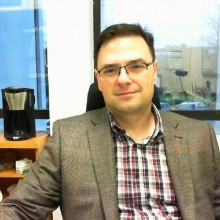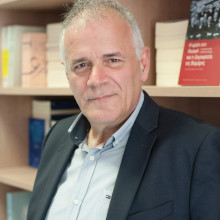This project aims at gaining scientific insight on how fundamental electronic processes at the microcosmos of metal/metal-oxide nanostructures are influencing the catalytic properties of nanoparticle-based catalysts in the model catalytic oxidation of CO and VOCs. The growth and synthesis parameters of the nanoparticles control their structural and optical characteristics. They will be grown using the method of citric acid complexation in possible combination with hydrothermal treatment. Laser-surface nanostructuring and laser ablation in liquid environments will also be employed as an alternative nanoparticle growth/fabrication route. The growth parameters are in turn expected to strongly influence the ultrafast electronic interactions of the resulting nanostructures. These will be studied by employing time-resolved ultrafast laser spectroscopy. This method is chosen due to its unique ability to investigate the very short timescales in which ultrafast electronic interactions take place, i.e. of the order of 10^-15 - 10^-12 s. Finally, the catalytic performance will be studied using the oxidation of and VOCs as probe reactions. Thus, we will employ complementary techniques in order to interrogate both the microscopic (ultrafast electron dynamics) and the macroscopic (catalytic performance) properties of the grown systems. In this way, we expect to acquire a deeper and spherical understanding of the physics leading to the catalytic properties of metal/metal-oxide nanostructures and explore the optimal conditions to control and enhance their catalytic properties.
Catalysis has benefited greatly from major developments in analytical sciences and new instrumentation, which have provided new insights on the structure of a (model) catalytic surface with up to atomic resolution. Nevertheless, the need to enhance our knowledge about the dynamics of heterogeneous catalytic reactions is still valid. In addition, new advanced techniques for catalyst synthesis and/or modification are being explored in order to create highly dispersed phases or specific growth and exposure of highly active facets of the catalytic phase. Catalysis science and technology is experiencing renewed interest and attention because of its ability to provide solutions in the transition to the new energy era (production of renewable/sustainable fuels) and environmental protection (emissions control, water quality). We propose to initiate a new collaboration, within which we will study the ultrafast electron dynamics of grown and laser fabricated metal oxide catalysts and how these in turn control the performance of the final catalysts. Time permitting and depending on the achieved progress we will proceed with an in-situ study of the ultrafast dynamics during the catalytic process which will greatly enhance our knowledge about the underlying physics. The project is of interdisciplinary character because it brings together expertise from physics, chemistry, optics, physical chemistry, chemical physics and material science in a combined effort to extend our knowledge in an environmentally crucial technology, i.e. heterogeneous catalysis.
Principal Investigator
External Personnel
Funding





